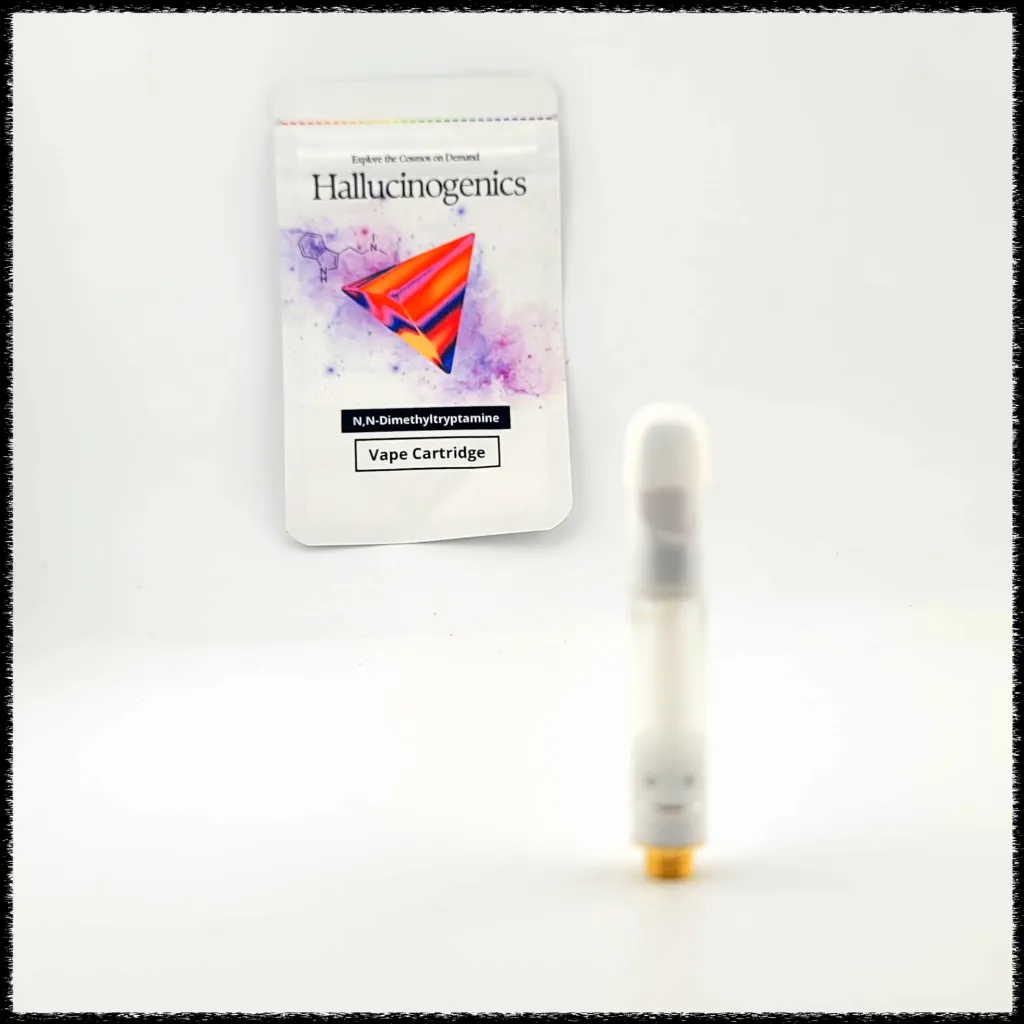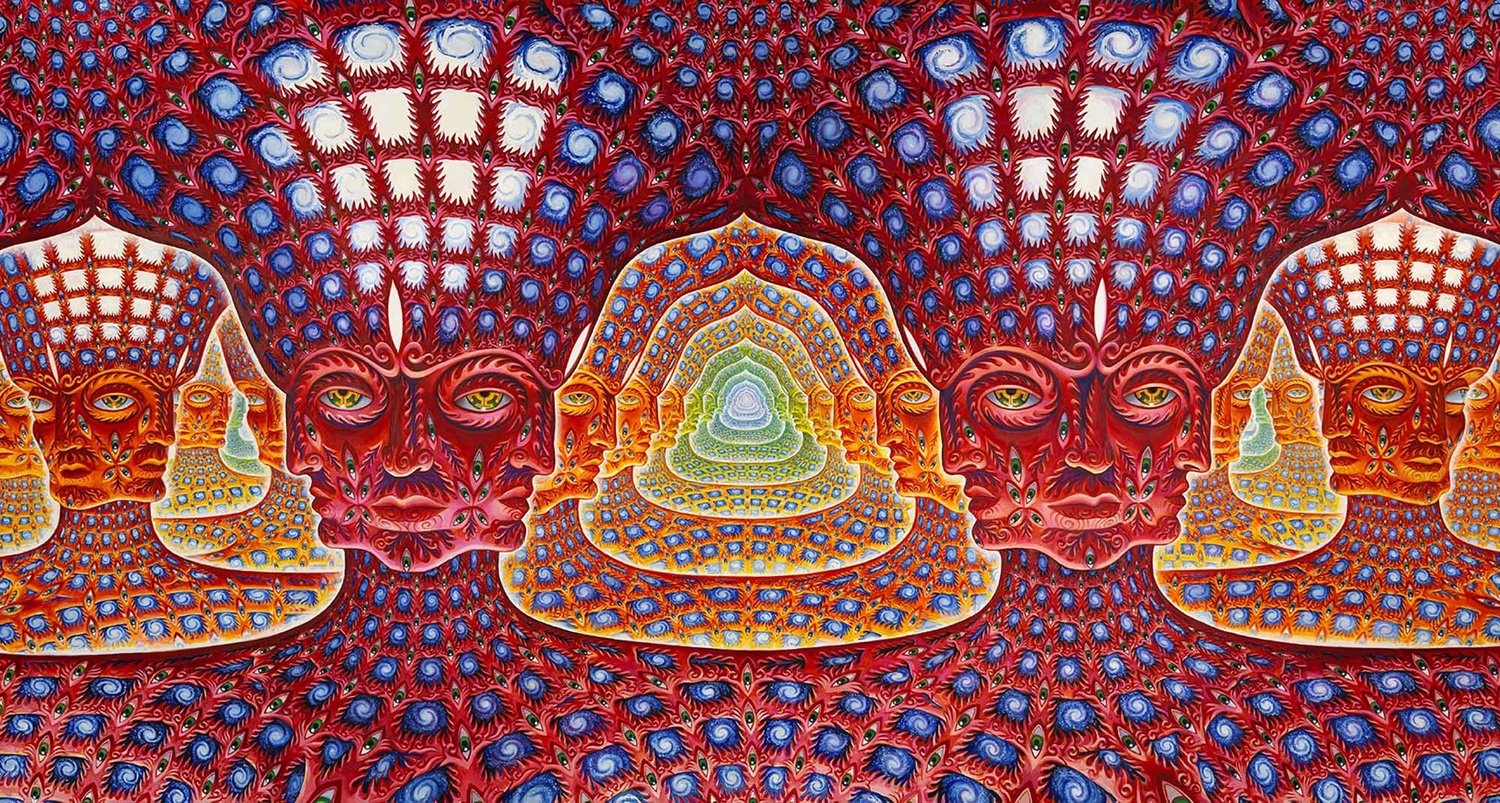DMT (N, N-Dimethyltryptamine) is a profoundly powerful naturally occurring psychedelic tryptamine. Sometimes referred to as “The Spirit Molecule” (coined by Dr. Rick Strassman) this compound has incredibly intense effects and is labeled as one of the most fascinating and powerful psychedelic substances on the planet. It opens doors to a completely different universe in a matter of mere minutes. Being used from ancient Amazon tribes to modern day psychonauts, it has had a powerful influence on humans’ exploration of the mind. Let’s explore what DMT is and its effects along with the philosophical inspiration it can peak as the science and experience blend.
What is it?
DMT is a tryptamine, related to things such as psilocybin or serotonin. It is the active compound in ayahuasca which are used for spiritual practices in some South American indigenous cultures. As well as Changa, a more modern smokable form. DMT is found in just about any living thing from plants to animals. The concentration varies from source to source but DMT is no stranger to living things, not even the human mind. It is endogenous to the human body being made in our own brains by our own amino acids. For what reasons we are not entirely certain but it’s been speculated for a variety of reasons that we will touch on later. Its legal status remains illegal in the majority of nations but is being legally used by some indigenous groups for its part in their ancient culture and religious practices. It is most commonly consumed on its own through the smoking or vaporizing of a freebase form of DMT. Other methods include vape cartridges of the substance. But what are the effects of this incredibly powerful compound?
What are its effects?
The effects of DMT are beautifully intense. Upon smoking DMT, the onset is near instant (within 30 seconds) and the duration is incredibly short between 5-20 minutes depending on the dosage. The experience has its parallels with other classical psychedelics but with a much greater intensity. Dissolution of body and ego, Intense kaleidoscopic visuals and geometry are a notable part of any psychedelic experience but in the DMT experience they are incredibly more intense. But DMT has much more things in store, at higher doses users experience things described as breakthroughs (breaking through to another reality) and are transported to a completely different reality that is described as feeling more real and familiar than real life. Encounters with entities are common and have an interesting phenomenon of different users meeting the same entities.
Where does it come from?
DMT is found all across nature in plants and animals. Originally used by native tribes in the Amazon and South American regions in the form of ayahuasca for its spiritual and healing properties. These cultures used ayahuasca for centuries and it was a substantial part of their spiritual practices to gain connection to the spirit world. DMT extraction methods came later in time in the 20th century allowing the compound to be isolated on its own leading to the more modern “breakthrough” experience. Western use began in the late 20th century as the psychedelic curiosity started evolving beyond just LSD or psilocybin. DMT’s profound ancient spiritual importance has played a pivotal role in shaping cultures that modern science is only starting to catch up to.
Emerging research? (Barker, 2018)
As we previously mentioned, DMT is native to the human body. Mechanisms exist in the human body to produce DMT with other naturally occurring compounds in the body and also break it down through biosynthesis. This suggests that there is a natural use in our bodies that use this compound. Although research is still in the early stages, through advanced testing, it has been found to naturally be in our blood, cerebrospinal fluid and other tissues. DMT affects more than just the serotonin receptors, it seems to influence other aspects of the body which could explain its protective and healing properties. Due to these findings it is theorized that DMT has a potential much deeper biological purpose, far beyond just being a hallucinogen. Some scientists believe that DMT could potentially serve purposes like protecting human cells, regulating brain activity, and even influence the nature of consciousness itself. As research continues we will further be able to understand DMT deeper and truly grasp what purpose it has in influencing our world.
Death by Astonishment
“Is it dangerous? Well, only if you fear death by astonishment.” This is a quote by Terence McKenna on the substance of DMT. It refers to how intense and mind-shattering the experience can be. It can completely dissolve you from reality. Users report entering realms of aliens and entities far beyond human comprehension. These dimensions are hyper-realistic and reported as “realer than real life” by the majority of users. Described as if they were returning home just because of how familiar it felt. DMT’s power can push you to the limits of your consciousness. Through the dissolution and death of ego, it is as if it pierces a veil into places well beyond us. It is of course crucial to approach it with respect and caution, due to its power it is important to be intentional with the use of it. High-quality sources to facilitate safe use are something Hallucinogenics offers. If you are curious about the selection of DMT we provide, you can take a look here.

Conclusion
DMT is a topic of absurd fascination, science, and spiritual philosophy. Its resonance with not only our mind and body but of spiritual interest make it an incredible experience. From ancient ayahuasca ceremonies to modern day exploration, it remains as one of the most influential psychedelics known to man. When approached with intention and respect, the benefits of such an otherworldly experience can be eye opening. Opening one’s perspectives on reality and consciousness. Communicating with entities that feel like long lost friends in a nostalgically familiar dimension can bring real absurdity and introspection into one’s life. With proper exploration and integration DMT can be as beneficial as it is unique.
Sources
Barker S. A. (2018). N, N-Dimethyltryptamine (DMT), an Endogenous Hallucinogen: Past, Present, and Future Research to Determine Its Role and Function. Frontiers in neuroscience, 12, 536. https://doi.org/10.3389/fnins.2018.00536



